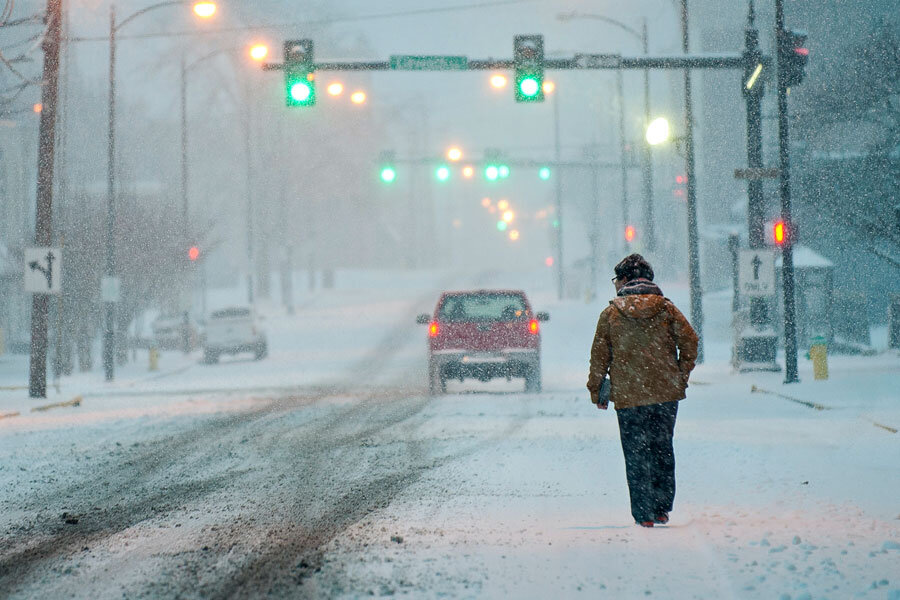Will East Coast get a 'perfect storm' this weekend?
Loading...
| Boston
A winter storm is headed for the East Coast this weekend, and meteorologists across the country tend to agree: it’s going to be a big one.
Inches – and even feet – of snow are predicted to hit the East Coast on Friday and carry over into the weekend. Although the storm is still two days away, meteorologists say computer models forecast that it will track between the Carolinas and Boston this weekend. It’s just a matter of which cities will get the most snow.
“The atmosphere is complex, and a lot of things have to come together,” Rich Otto, lead forecaster at the National Weather Service’s Weather Prediction Center, tells The Christian Science Monitor in a phone interview Wednesday. “Cold air is No. 1, and a lot of moisture to move into the cold air, and then the strength of the storm to increase wind speeds.”
But the East Coast sees snowstorms every year. What’s the big deal?
“We talk about these perfect conditions coming together, and [when they do] it is usually for a narrow area of the country,” Otto tells the Monitor. Much like the Boston blizzard that wrecked havoc on southern New England this time last year, “This storm is going to be widespread, a lot of folks will see heavy snow,” he adds.
Otto says that meteorologists and East Coast residents have used the terms "historic" and "record-breaking" in the past to describe storms that exist in a “narrow area, and are not widespread.” This weekend’s storm, however, might give these past storms a run for their money.
Could all this hype be wrong?
It’s “highly unlikely” we don’t see a big storm, says Otto. “But there’s always potential for wrenches to get thrown into the mix,” he adds. “If the air temperature warms up, some of the snow could become freezing rain.”
But there are usually signs that a storm’s speed is decreasing, Tom Niziol, winter weather expert at The Weather Channel, tells The Christian Science Monitor in a phone interview Wednesday.
“Very often with these types of storms, there are a lot of questions about if it will be cold enough to produce snowfall, [because] sometimes it turns into an all-rain event,” says Niziol. “But these models have been remarkably consistent in their prediction of a major snowstorm in the Mid-Atlantic region. They are all on board with the same scenario, they are telling the same story.”
The mid-Atlantic region between Washington, D.C., and Philadelphia will get the worst of it, says Niziol. While subsequent prediction models have not weakened the storm, they have moved it a little more south each time.
“The jury’s still out on how much snow for Boston [and] New England,” says Niziol. Meteorologists still have to “fine tune” the Northern details, but Niziol predicts a "top five" storm for DC and Baltimore this weekend.








